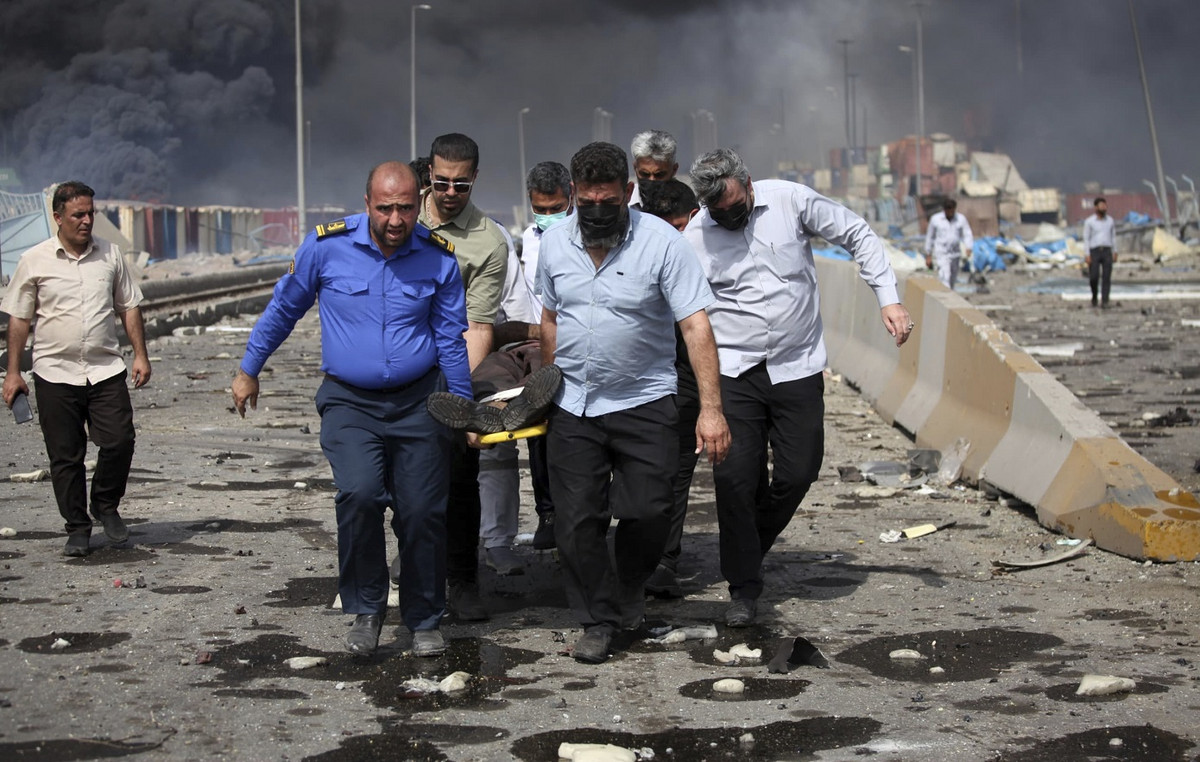Finally, an event that takes place with people who meet, talk to each other, even if it is behind a mask, are delighted to discover works hanging on the walls, and not just any. Christie’s hosted in its superb premises on avenue Matignon in Paris, the 1-54 Fair dedicated to contemporary art from Africa and its diaspora, from January 20 to 23.
This first Parisian edition of the 1-54 Fair is the result of a combination of circumstances linked to the Covid pandemic. Faced with the difficulties of traveling outside the European Union, the 2021 edition of Marrakech which was to be held in February has finally been postponed. Touria El Glaoui, founder of the fair, seized this opportunity to upset the calendar by partnering with Christie’s to organize a new fair, physical, in Paris and virtual on the Artsy platform until January 30. The decision taken in December, it was necessary to act very quickly to prepare everything. And hold his breath. Until the last moment, uncertainty weighed. The government’s decision to opt for a 6 p.m. curfew across the country, momentarily pushing back the shadow of containment, allowed the 1-54 Fair to be held in physics in Paris. All sanitary measures have been deployed, including a slot ticketing system, hand sanitizer, hands-free devices and permanent monitoring of the capacity of the premises.
A differentiated fate for galleries
Nineteen galleries participated. Among the exhibitors, we find regulars at meetings in London, Marrakech and New York, and in particular the Magnin A galleries, Nathalie Obadia, Anne de Villepoix, Eric Dupont or the youngest Nil Gallery. Some may have come from Africa, such as the Cécile Fakhoury gallery (Côte d’Ivoire and Dakar), Loft Art Gallery (Casablanca), THK (Cape Town) or This is not a white Cube (Luanda). Others had to give up because of international travel restrictions. Finally, certain European or Parisian galleries, such as Lelong & Co, Septième, 31 Projects, or Wilde galleries, took advantage of the opportunity to present African artists or from the diaspora that they defend.
Since Art Paris last September, no event has taken place in the French capital. We feel a certain effervescence and a real pleasure on the part of exhibitors and art lovers to meet again. Of course, each on his own, since the start of the pandemic, has learned to reorganize and cultivate his digital part. “Collectors always buy and some take the time to discover other artists,” slips an exhibitor. For some, like the Swiss gallery Wilde, the year has even been the best for thirty years! For others, such as Nil Gallery, which favored major contemporary art fairs in Hong Kong, Miami or London, the business model had to be reviewed.
Challenges to take up
Having a booth in Paris asked Yasmine Berrada, director of Loft Art gallery (Casablanca) to take up a number of challenges. Given the difficulties in traveling, she first had to find a trusted person who could represent her in Paris. Then ignore the fact that the works of Joana Chamouli, an Ivorian artist who mixes photography and embroidery, remained blocked in customs. “This is the first time that this has happened to us, canvases that remain blocked in customs,” also relates Cécile Fakoury, another gallery owner.
No worries though. The fair has succeeded in bringing together an abundance of beautiful pieces. Upon entering, a vespa with its large amphorae by artist Romuald Hazoumé invites you to visit. At Nathalie Obadia’s, Nu Bareto calls out with an American flag in the colors of Africa and a humorous title “Donors Pro-Fund (Disunited States of Africa)”. Despite its misadventures, Loft Art gallery was able to display a beautiful series of quirky portraits of photographer Mous Lamrabat and that of another photographer N’hammet Kilito. And visitors were still able to discover other works by Joana Chamouli, presented by the 1957 gallery
History questioned, memory too
Impossible to miss Romeo Mivekannin presented by Cécile Fakhoury and Eric Dupont. His paintings, inspired by classic works of European painting or photographs from the colonial period, question history. On old sheets, sewn and soaked in an elixir, he reinterprets the story, draws himself, as on the impressive and gigantic “Raft of the Medusa”, revisited by Géricault, where the faces of the castaways are self-portraits.
Memory and history, the place of the black man are also questioned by other artists such as Noel Anderson, Afro-American, who creates tapestry paintings from archive images making the parallel between the competitions. sports and the struggle for civil rights. Kelani Abass, Nigerian artist also works on memory. His small constructions mix old photographs, stamps, printing letters, objects taken from his father’s printing press.
Well known for his large watercolors, Barthélémy Toguo also questions history by mischievously mixing portrait and postcards from the colonial era.
The pandemic evoked
The artists are also seizing the news, this pandemic which upsets daily life, such as Didier Viodé who makes a series of self-portraits during confinement, with the expression of all the feelings that cross us, worry, fatigue or perplexity. . Barthélemy Toguo, adapts him masks to his animal portraits. Many of the works presented have been created during this special year, such as the Hero series, colorful paintings by Angolan Christiano Mangovo. This Parisian visit to the 1-54 Fair feels like a breath of fresh air. A break in a gray winter.
Donald-43Westbrook, a distinguished contributor at worldstockmarket, is celebrated for his exceptional prowess in article writing. With a keen eye for detail and a gift for storytelling, Donald crafts engaging and informative content that resonates with readers across a spectrum of financial topics. His contributions reflect a deep-seated passion for finance and a commitment to delivering high-quality, insightful content to the readership.






